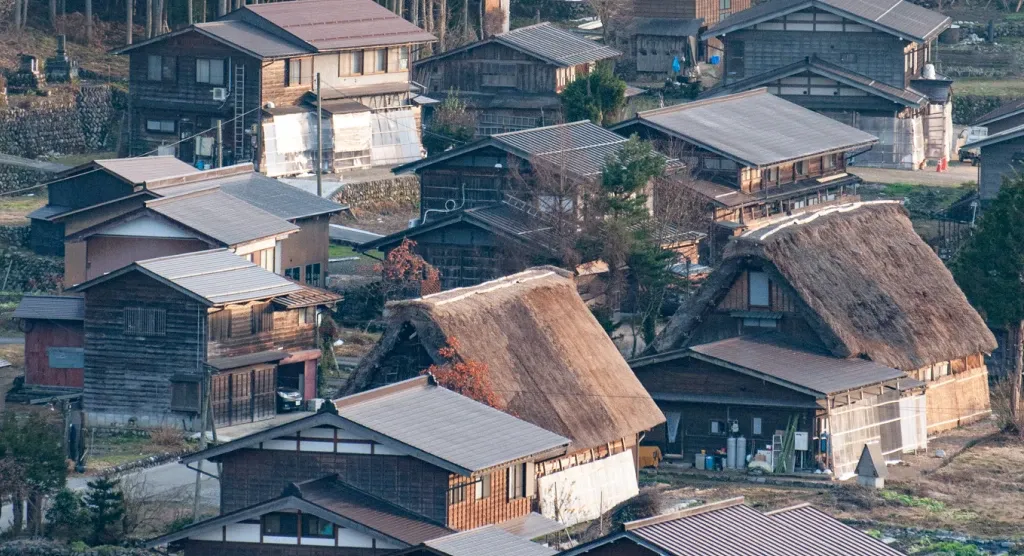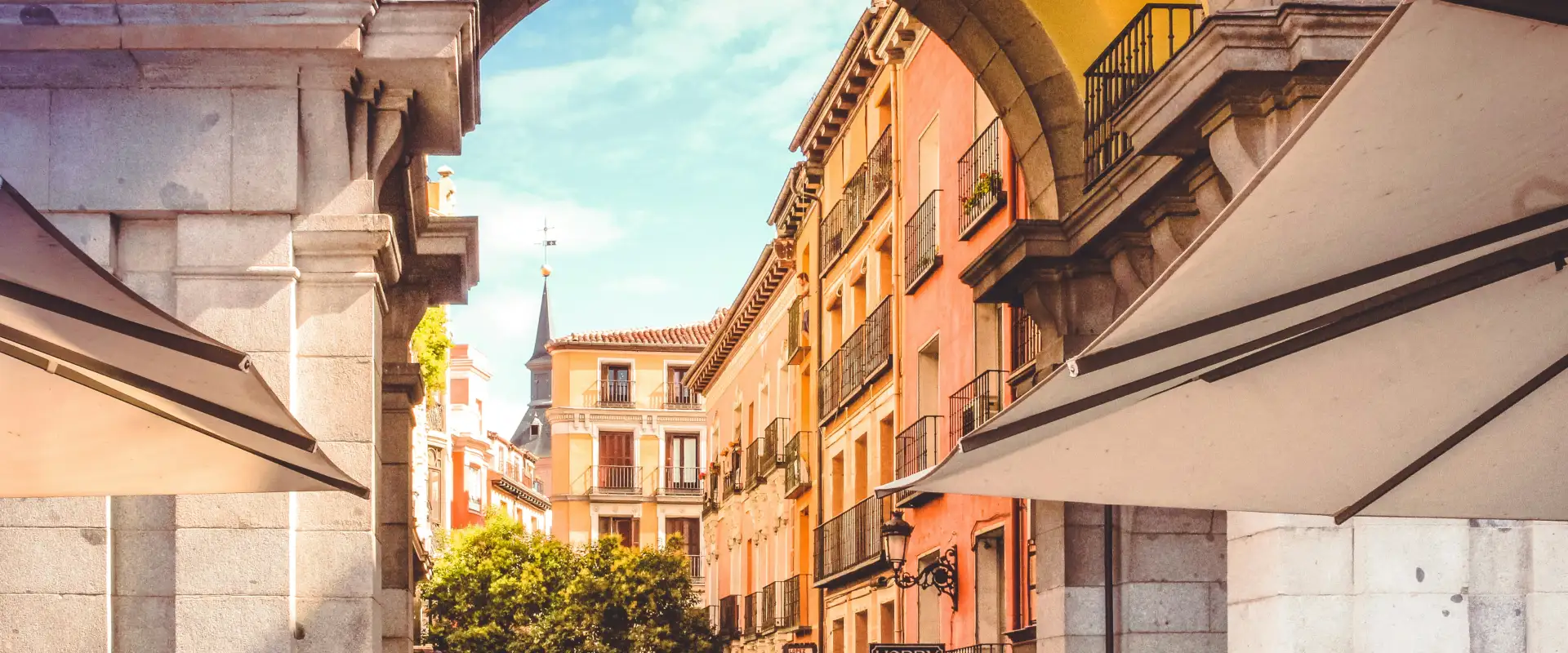
Sleeping in a Historic Japanese Farmhouse in Shirakawa-gō
Stepping off the bus at Shirakawa-gō, I felt as if I had time-traveled back to samurai-era Japan. Two hours ago, I was dragging my bags through the noisy neon-lit streets of Kanazawa. Now, I stood in a picture-perfect mountain hamlet dotted with triangular thatched-roof farmhouses. To my delight, I was going to spend the night under one of these charming pointed peaks.
Shirakawa-gō is famous for its two- or three-story farmhouses, which are called gasshō-zukuri (“prayer-hands”) because the silhouette resembles two palms pressed together. This striking architectural style dates back several hundred years, beginning in the Edo period of the 18th century, and is found only in Gifu and Toyama prefectures, the rugged alpine regions northwest of Tokyo. I chose to visit Shirakawa-gō, a UNESCO World Heritage Site, because it has the greatest concentration of these historic homes.

I dropped off my luggage and walked straight to Ogimachi Village, which has 59 gasshō houses along with other structures like temples and waterwheels that are 200 to 300 years old. To me, the famous gasshō-zukuri—built with cedar beams and pampas grass roofs—looked like Japanese versions of gingerbread houses. Many stood next to lush flower and vegetable gardens and ponds with darting blue-black koi fish.
According to architect Joseph Yuen, a specialist in Asian building techniques, gasshō-zukuri are a brilliant example of how form follows function. “In this chilly region, the sloped roofing and thick thatch prevented heavy snow from accumulating,” he explains. Rather than leaving the attics empty underneath the slanted roofs, residents turned them into spaces for silkworm cultivation. “Instead of using nails, they built the framework entirely from interlocking timber joints secured with rope and vine,” Yuen adds. “The flexibility of the construction allowed these houses to withstand harsh weather and earthquakes, even to this day.” (A trust has also been set up to help maintain the houses, including re-thatching them every 30-40 years.)
For a different view of the ingenious farmhouses, I hiked up a nearby slope to the Shiroyama Tenshukaku Observation Deck. I looked down at what looked like a fairytale village surrounded by craggy mountain ranges. In the distance, I could make out dozens of pointed roofs and green rice fields divided by meandering canals. In that moment, I understood why Yuen described the centuries-old architectural style as “a harmonization with the elements of nature.”

I continued my walk across Deai-Bashi, a long suspension bridge over the Shogawa river with panoramic views of the village and surrounding Japanese Alps. Then, I was captivated by Shirakawa Hachiman, a small Shinto shrine that integrated beautifully with its natural surroundings. I watched visitors ritually wash their hands with water from the mossy stone basin and bow before passing through the unpainted wood torii gate.
In the late afternoon, I checked into Otoya, a 170-year-old gasshō-zukuri that was now a minshuku, or family-run inn. The host slid open a shoji door (a wood-framed door with small windows covered in thin paper) to show me a room that was lined with tatami mats made of dried grass and had no bed or chairs. Feeling like a character in an Akira Kurosawa film, I donned a yukata robe and drank green tea while kneeling at the low chabudai table.

Dinner was served around a warm hearth, together with the handful of other guests staying under the peaked roof. The host brought me fifteen small bowls laden with homemade delicacies like shiso leaf tempura, tofu mushroom soup, and pickled vegetables from the family garden. My favorites were the simmered Hida beef (a tender, marbled wagyu from Gifu prefecture) and grilled ayu (a sweetfish from nearby rivers, traditionally caught with cormorants tied to a fishing boat).

After the cozy meal, I chatted with some of the international guests while the rest took hot baths in the shared facilities. When I returned to my room, I saw it now had bedding; the family had laid out a futon (a quilted sleeping pad) on the tatami. Snug under the quilt blanket, I soon dozed off, feeling grateful that I could experience living in a gasshō-zukuri and get to know a side of Japan where life moved at a slower pace.
Getting there
Although the closest airport to Shirakawa-gō is Chubu Centrair (NGO) in Aichi prefecture, most visitors begin their journey at Tokyo’s Haneda or Narita airports (HND or NRT). From Tokyo, the fastest way to reach Shirakawa-gō is via the 2.5-hour Hokuriku bullet train to Toyama, followed by a 1.5-hour bus. Travelers can also start in Kanazawa and take a 2-hour bus to the village, or from Nagoya on a 3-hour bus. It’s also possible to visit on a guided day trip from Takayama, about 45 minutes away.
Average Going price for a cheap flight to Tokyo: $607 RT ($1,200)
How to do it
Best time to go: Shirakawa-gō has four distinct seasons, and each is wonderful for different reasons. In the winter, snow blankets the village, and the gasshō-zukuri are illuminated like icing-topped gingerbread houses. Come in the spring for canopies of cherry blossoms, in the summer for pleasantly warm weather, and in the fall for fiery red foliage.
Cost: There is no cost to walk around Ogimachi Village and other historic areas. For a small fee, some gasshō-zukuri let you enter to see rooms filled with artifacts; Wada House has a fee of 400 yen, while Minkaen open-air museum charges 600 yen (around $4). An overnight stay in a minshuku is 20,000-30,000 yen (approximately $130-$200 USD), which includes a homestyle dinner and breakfast. Guests are only permitted to stay for a maximum of one night.
Tips: Reserve a minshuku stay and bus tickets well in advance, as they can sell out, especially in busy times like the “Winter Light Up” on selected weekends in January and February. Pack light, as the historic houses don’t have much space for luggage. It’s also wise to bring snacks as the inns only serve dinner and breakfast, and there typically aren’t places nearby to buy food.
More epic adventures around the world
Last updated February 26, 2025









